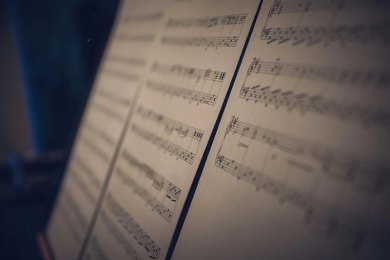Jazz chord progressions play a crucial role in defining the unique and captivating sound of jazz music. With its rich history and innovative approach to harmony, jazz offers a wide variety of chord progressions that can inspire and captivate both musicians and listeners alike.
The flexibility and complexity of jazz chord progressions allow musicians to express their individuality and creativity. By understanding the underlying chord progressions, musicians can navigate different tonalities and experiment with different scales and modes.
In this article, we will explore the intricate world of jazz chord progressions, their characteristics, and how they contribute to the overall jazz experience.
What are Jazz Chord Progressions?
Jazz chord progressions are a sequence of chords that form the harmonic foundation for jazz compositions and improvisations. They provide the framework upon which musicians build melodies, harmonies, and improvisations.
Jazz chord progressions are known for their complexity, richness, and harmonic sophistication, distinguishing them from chord progressions commonly found in other genres of music.
They often feature extended chords such as 7th, 9th, 11th, and 13th chords, which add color, tension, and complexity to the progressions.
In addition to extended chords, jazz musicians frequently experiment with voicings and chord substitutions to add variety and interest to their progressions.
By altering the voicings or replacing certain chords with substitutes while maintaining the overall harmonic integrity, musicians can create new and unexpected sounds within the context of a chord progression.
Common Jazz Chord Progressions
ii-V-I Progression
The ii-V-I progression consists of three chords: the supertonic (ii), the dominant (V), and the tonic (I). This progression creates a strong sense of resolution and is commonly found in jazz standards.
The ii-V-I progression is a cornerstone of jazz harmony. It provides a sense of tension and release, as the dominant chord (V) leads to the resolution of the tonic chord (I).
Musicians often use this progression as a starting point for improvisation, exploring different scales and modes that fit within the chord progression. It’s also one of the most fundamental and frequently used progressions in jazz.
Turnaround Progression
The turnaround progression is often used to conclude phrases or sections in jazz compositions. It typically involves a series of chords that lead back to the beginning of the progression. Turnarounds are commonly based on the I-VI-II-V or I-IV-II-V progressions.
Turnaround progressions serve as a way to create momentum and transition smoothly between different sections of a jazz composition. They provide a sense of closure and anticipation, leading the listener back to the beginning of the progression.
Musicians can experiment with different voicings and substitutions within the turnaround progression to add complexity and interest.
Modal Progressions
Modal progressions are prevalent in modal jazz, where each chord represents a different mode or scale. These progressions create a unique and exploratory harmonic landscape. Examples include the Dorian mode progression and the Mixolydian mode progression.
Modal progressions offer a departure from traditional tonal harmony, allowing musicians to explore different tonalities and modes within a single progression.
Each chord in a modal progression represents a different scale or mode, providing a diverse and colorful harmonic palette.
Musicians can use modal progressions to create a sense of tension and release by emphasizing different notes within each mode.
Bebop Progressions
Bebop progressions are characterized by their fast-paced and complex nature, often featuring chromaticism and rapid chord changes.
These progressions are commonly found in bebop compositions and improvisations, showcasing the technical skills and virtuosity of jazz musicians.
Bebop progressions are known for their intricate and challenging nature. They often involve rapid chord changes and chromatic passing tones, creating a sense of forward motion and excitement.
Musicians can use bebop progressions to showcase their technical skills and improvisational abilities, pushing the boundaries of jazz harmony.
Characteristics of Jazz Chord Progressions
Jazz chord progressions possess several distinctive characteristics that contribute to the genre’s unique sound:
Extended Chords
Jazz often employs extended chords such as 7th, 9th, 11th, and 13th chords. These chords add color, tension, and complexity to the progressions, creating a rich and sophisticated harmonic palette.
Extended chords are chords that go beyond the basic triads commonly found in other genres of music. They include additional notes such as the 7th, 9th, 11th, and 13th, which add harmonic richness and complexity.
These extended chords provide a wide range of possibilities for musicians to explore and create unique sounds within the context of a chord progression.
Voicings and Chord Substitutions
Jazz musicians often experiment with different voicings and chord substitutions to add variety and interest to their progressions. These techniques involve altering the chord voicings or replacing certain chords with substitutes while maintaining the overall harmonic integrity.
Voicings refer to how the notes of a chord are arranged and distributed among different instruments or voices. Jazz musicians often explore different voicings to create different textures and colors within a chord progression.
Chord substitutions involve replacing certain chords with substitutes that have similar harmonic functions, adding unexpected twists and turns to the progression.
Modulations
Jazz chord progressions frequently incorporate modulations, which involve changing the key center within a composition or improvisation. Modulations can provide a sense of movement, surprise, and excitement, expanding the harmonic possibilities within a piece.
Modulations are a common technique used in jazz to create a sense of variety and interest within a composition or improvisation. By changing the key center, musicians can explore different tonalities and create new harmonic relationships.
Modulations can provide a sense of movement and excitement, keeping the listener engaged and interested.
Altered Chords
Altered chords, such as altered dominants, are commonly used in jazz progressions to create tension and enhance the resolution. These chords feature altered extensions or alterations such as b9, #9, #11, and b13, adding a unique flavor to the overall sound.
Altered chords are chords that have been modified by adding or altering certain notes. In jazz, altered dominants are commonly used to create tension and enhance the resolution of the tonic chord.
These chords feature altered extensions or alterations such as b9, #9, #11, and b13, adding a unique and distinctive flavor to the overall sound of the progression.
Importance of Jazz Chord Progressions
Jazz chord progressions are essential to the genre’s improvisational nature and serve as a foundation for musicians to explore their creativity. They provide a roadmap for improvisation, allowing musicians to navigate different tonalities, experiment with scales and modes, and create expressive and captivating solos.
The flexibility and complexity of jazz chord progressions allow musicians to express their individuality and creativity. By understanding the underlying chord progressions, musicians can navigate different tonalities and experiment with different scales and modes.
Moreover, jazz chord progressions contribute to the overall emotional and aesthetic experience of jazz music. The intricate harmonies and sophisticated progressions elicit a wide range of emotions, from melancholy to joy, from tension to resolution, showcasing the depth and complexity of jazz as an art form.
Conclusion
Jazz chord progressions are at the heart of the genre’s musical language. They define the harmonic structure, provide a canvas for improvisation, and contribute to the captivating and unique sound of jazz music.
From the fundamental ii-V-I progression to the intricate modulations and altered chords, jazz chord progressions offer endless possibilities for musicians to explore and create.
Whether you are a jazz enthusiast, musician, or simply curious about the genre, understanding and appreciating jazz chord progressions will enhance your experience and deepen your connection with this extraordinary musical genre.



